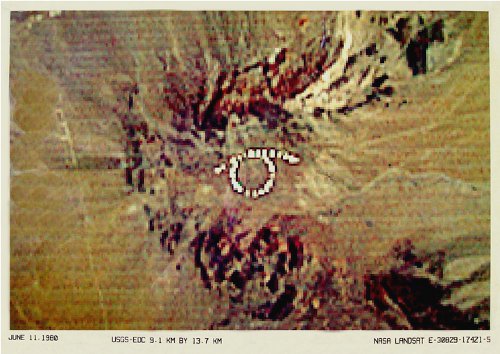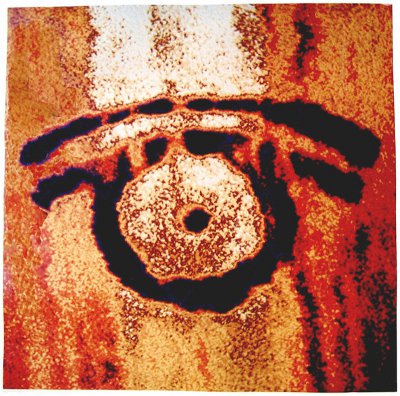
In 1980, artist Tom Van Sant arranged 90 mirrors in the Mojave Desert at angles precisely calculated to overexpose the sensors on NASA’s Landsat II satellite 600 miles overhead and produce the image of a human eye 2.5 kilometers wide.
Two years later Van Sant commissioned the National Research and Resource Facility for Sub-Micron Structures at Cornell to etch the image of an eye a quarter-micron wide into a salt crystal:

The first image was 100,000 times larger than a human eye, the second 100,000 times smaller, two renderings of the same image that differ in scale by a factor of 10 billion.
“So the same artist who made the smallest drawing ever has also made the largest,” Richard Feynman told an audience. “Let’s go up another scale, the same amount again, another hundred thousand, and then try to draw an eye: Where would we have to draw it? Well, it turns out that it’s there — it’s a beautiful eye in the heavens, namely Saturn with her rings!”
More information at Van Sant’s website.
